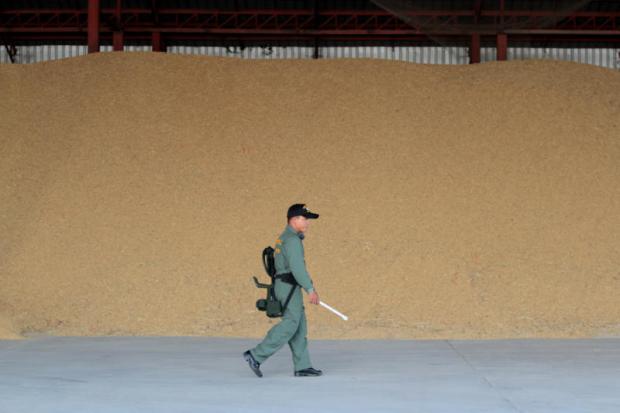
Ahead of tomorrow's court verdict on the malfeasance case of former prime minister Yingluck Shinawatra for her role in the controversial rice-pledging scheme, I think we should revisit the concept of rice pledging and its rationale as a policy to help farmers.
Putting aside the allegations of malfeasance and Ms Yingluck's fate, I still see some advantages to this scheme. In Thailand, rice pledging was created in 1981 as a tool to tackle plunging rice prices at the beginning of harvest season when surplus rice entered the market. Pledging allows farmers to have some cash as they keep their rice, or to be more precise, paddy, with the state temporarily. They will normally take back the produce for sale at the end of the season when rice or paddy prices tend to surge.
Originally, the rice-pledging scheme was different from price intervention. It is just an option to help farmers delay rice sales until the prices become more agreeable. With some cash in hand, they are able to wait for a better time when prices are right. But it should be noted that farmers have to be responsible for their own planning, regarding anticipated prices and the exact prices that they could get (in general, the price at the end of the season is approximately 10% higher than that of the beginning of the season).
Therefore, the pledged price is very important. The basic principle is: The pledged price must be higher than the market price at the beginning to give some incentive for farmers to hold their produce and wait for the better prices. It is equally important that the pledged price must be lower than the market price at the end of the season, or farmers will not take their produce back for sale, but leave it as a burden for the state.
There are a few indicators to decide if a pledging policy is a success. Firstly, it will be successful if the scheme can draw enough rice from the market, keeping the price from plunging further (though it's not necessary that the state must pledge every grain as claimed by the then Yingluck administration); secondly, by the end of harvest season, farmers must be willing to take back their produce to sell it at market prices.
For the past 20 years, this policy, which worked well with market mechanisms, was an efficient tool in pushing up rice prices. It could reduce rice supply at the beginning of the harvest season, though it depends entirely on the farmers if they want to pledge their rice, and how much they want to pledge. The policy didn't cause such huge financial damage as in the Yingluck case as most rice would eventually be sold. In some years, the state could even earn some profit from this scheme.
But we must be aware of some limitations too. To begin with, this policy functions well with non-perishable produce which can last a while. It's not advisable for produce that perishes easily like cassava, longan or fruit, as it will end up rotten. This explains why it must be paddy, not milled rice, that should be pledged.
In addition, it's necessary the policy be used temporarily, not a measure to stop the price of rice falling over the long term. And finally, we cannot use this policy as a direct tool to set up desirable market prices. The best pledging could do is to help keep out the surplus which causes prices to fall in the beginning of the season.
However, as we have witnessed, some governments decided to set very high pledged prices which resulted in most farmers taking the pledged prices as sale prices. Given such circumstances, farmers left their rice with the state, instead of taking it back for sale in the market. From "pledging", the scheme was transformed into rice buying that caused a fiscal burden on the state as it had to find the money to buy the produce. A burden also arose in the form of storage and selling. Huge amounts of rice kept in storage adversely affected selling prices and market mechanisms.
It should be noted that, though the state ended up buying the rice, it still had to maintain the name as of the scheme as "rice pledging" since buying rice at higher than market prices and selling it at lower prices is regarded as price intervention which violates free trade rules, which could result in trade repercussions.
The main problem with rice pledging is the way it is politicised. But otherwise, I still regard it as a good mechanism to help out our farmers as long as we maintain the golden rule: "Keeping the pledged price higher than that of the market at the beginning of the season, and lower at the end of the season". If we can do that, farmers can avoid a rush to sell their rice that causes prices to crumble, and instead patiently wait till they can get more favourable prices.
In order to get a clear picture, I think we should compare rice pledging with price guarantees, a landmark policy of the Democrat Party.
Rice pledging and rice price guarantees are separate policies that function differently. In my opinion, the latter is ideal as a social welfare policy, a form of "minimum income guarantee" which has nothing to do with marketing or rice price policy.
Under this policy, if farmers who register with the state make a lower income than they had anticipated, because rice prices plunge or stemming from the impact of natural disasters, the state will compensate them for losses.
What we need to understand is that the guaranteed income is just a minimum, so the state has to set an amount to which each farmer is eligible (for instance, how much help farmers can seek for how many tonnes of rice).
This can be an issue for large-scale farmers, who may take full advantage of rice pledging since the state accepted "every grain of rice", as the price guarantee set limits at the minimum level.
But the merit of a price guarantee scheme was evident when the country was hit with the big floods in 2011. Many farmers became penniless, and lost all their rice, but they could still receive a minimum income as guaranteed by the Democrat-led government.
The reason I like this policy has nothing to do with rice prices or marketing. It can truly help farmers in need and, under such a principle, we can do it without fear of breaching the free trade rules.
I want to see this policy applied to all types of farmers, but I understand there are limitations. We might like to start with rice farmers, and extend the help to other farmers like tapioca planters.
Some people tend to compare it to rice pledging which I don't think is correct since each has a different rationale.
With a different rationale, both policies can be applied at different times, with different outcomes. I believe we can do this, as long as we don't politicise the rice issue.
Decharut Sukkumnoed is head of Kasetsart University's Agricultural and Resource Economics Department. He is well-known for his civic role.
